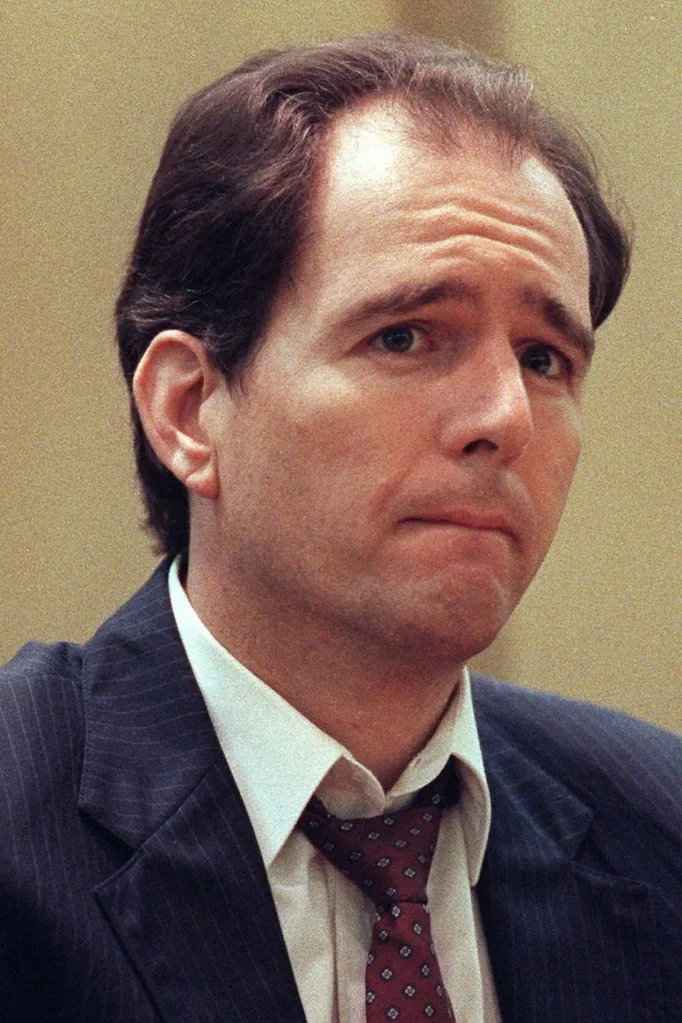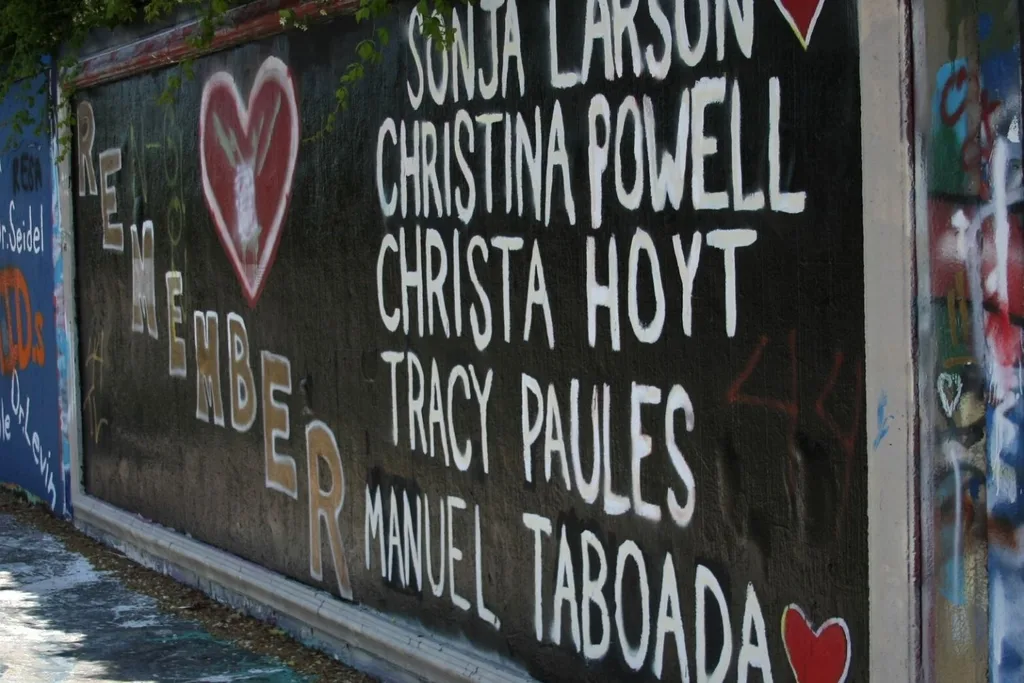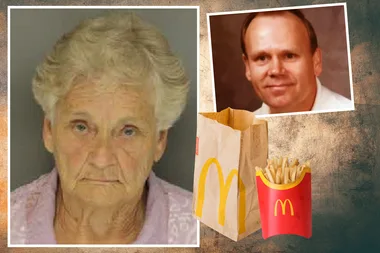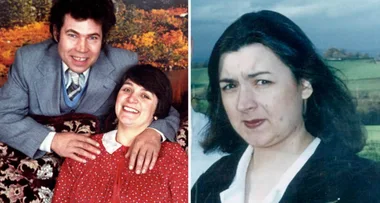A chain of chilling murders left an entire community fearing for their lives
Christina Powell was always smiling and when something was funny, she would roar with laughter.
Good at maths, Christina wanted to be an architect soshe could design affordable homes for low income families.
The big-hearted 17-year-old was due to start her first year at university, to make her dream come true.
She moved into a student apartment with Sonja Larson, a popular but quiet 18-year-old.
But after Christina’s parents, Frank and Patricia, couldn’t reach their youngest daughter for a couple of days, they grew worried.
And when they arrived at the girls’ apartment for a scheduled visit, Christina didn’t open the door.
That Sunday, August 26, 1990, the police were called.
Inside, they were met with the most horrifying sight.

The girls had been mutilated.
Christina was found in the living room.
There were remnants of glue on her mouth from where it had been taped shut, and also on her hands, as they’d been bound behind her back.
After her clothes had been cut off, she’d been raped, forced face down and stabbed five times.
Sonja’s body was found in her bedroom upstairs. Her mouth had been taped shut too, to stifle her screams.
It was clear she’d desperately fought for her life as she’d been stabbed
to death.
That night, police discovered a third student had been murdered.
Christa Hoyt, 18, had such a warm smile, her friends called her Glowworm.
Like Christina, her wrists had been bound, her mouth taped shut and her clothes cut from her body.
She’d been raped, forced to lie face down and stabbed in the back, rupturing her heart.
Sickeningly, her head had been severed and placed on a bookshelf.
As news broke of the three brutal murders, terror swept through the sleepy town of Gainesville, in Florida.
Dubbed the Gainesville Ripper, the identity of the cold-blooded killer was a complete mystery.
The murderer had covered their tracks by disposing of the duct tape and leaving no fingerprints.
Students were terrified they may become the ripper’s next victim.
Many fled to their homes, some never returning.
Others slept together in groups, keeping baseball bats under their beds and triple locking their doors.
No-one felt safe.


‘There aren’t words to explain the fear,’ said Jane Hanby, whose son was attending the university. ‘We didn’t know what his next move would be.’
And the killer did make a next move…
On August 27, Tracy Paules and Manuel Taboada, both 23, were sleeping when the monster pried open the sliding glass door of their student apartment.
Finding Manuel in his bedroom, there was a struggle before the killer stabbed him 31 times.
Terrified, Tracy tried to barricade herself in her room, but the killer broke through her door, wielding the foot-long military
knife he’d used to slay his other victims.
‘You’re the one, aren’t you?’ she said.
‘Yeah, I’m the one,’ he told her, before taping her mouth and binding her wrists.
Then he cut off her clothes and raped her.
Next, the killer turned her over and stabbed her in the back three times.
All the murders had occurred less than three kilometres from each other.
Police worked day and night on a huge 6500 leads and 1500 pieces of evidence.
They initially focused their attention on a mentally ill student who had lived in the same apartment complex as Tracy and Manuel.
But with no evidence, they had to look at other options.
Then, in January 1991, four months on from the killing spree, Danny Rolling was brought to the police’s attention.
Locked up in a county jail, he was awaiting trial for a supermarket robbery.
The Gainesville murder task force had started to look at prisoners who had been arrested after the last murder occurred.
Rolling had recently had a tooth removed by the jail’s dentist, so the task force issued a warrant for the extracted body part.
DNA tests were carried out – and the results matched the DNA left by the killer at the murder scene.

In June 1992, Daniel Harold Rolling was charged with all five murders.
He initially denied them, but he pleaded guilty on the eve of his trial.
Rolling, who said he wanted to be a superstar, told the judge, ‘There are some things that you just can’t run from’.
While the defence argued that Rolling had been violently abused as a child and had been mentally ill at the time of the murders, prosecutor Rod Smith portrayed him as a cunning killer who stalked his victims like ahunter.
The court heard Rolling had set up camp in woodland near the victims’ apartments and had bought a $50 knife especially.
After mutilating some of his victims, he removed skin and body parts and kept them as trophies.
The jury unanimously found Rolling guilty of all five murders.
The following day, all 12 jurors voted that Rolling should be sentenced to death.
During his time in jail, he drew and wrote a graphic book titled, The Making of a Serial Killer.
On October 25, 2006 − more than 16 years after his chilling rampage − Rolling, aged 52, was put to death by lethal injection, witnessed by many of the victims’ relatives.
Dianna Hoyt, stepmother of Christa Hoyt, said, ‘Maybe now that we don’t have this on us, we can try and relax and live with the memories we have of our children and be at peace.
Based on a true story
Gripped by the horrifying Gainesville Ripper murders, aspiring writer Kevin Williamson wrote a screenplay loosely based on these real-life terrors.
The screenplay went on to become the 1996 classic film Scream, where a masked maniac stalks and murders high-school students.










